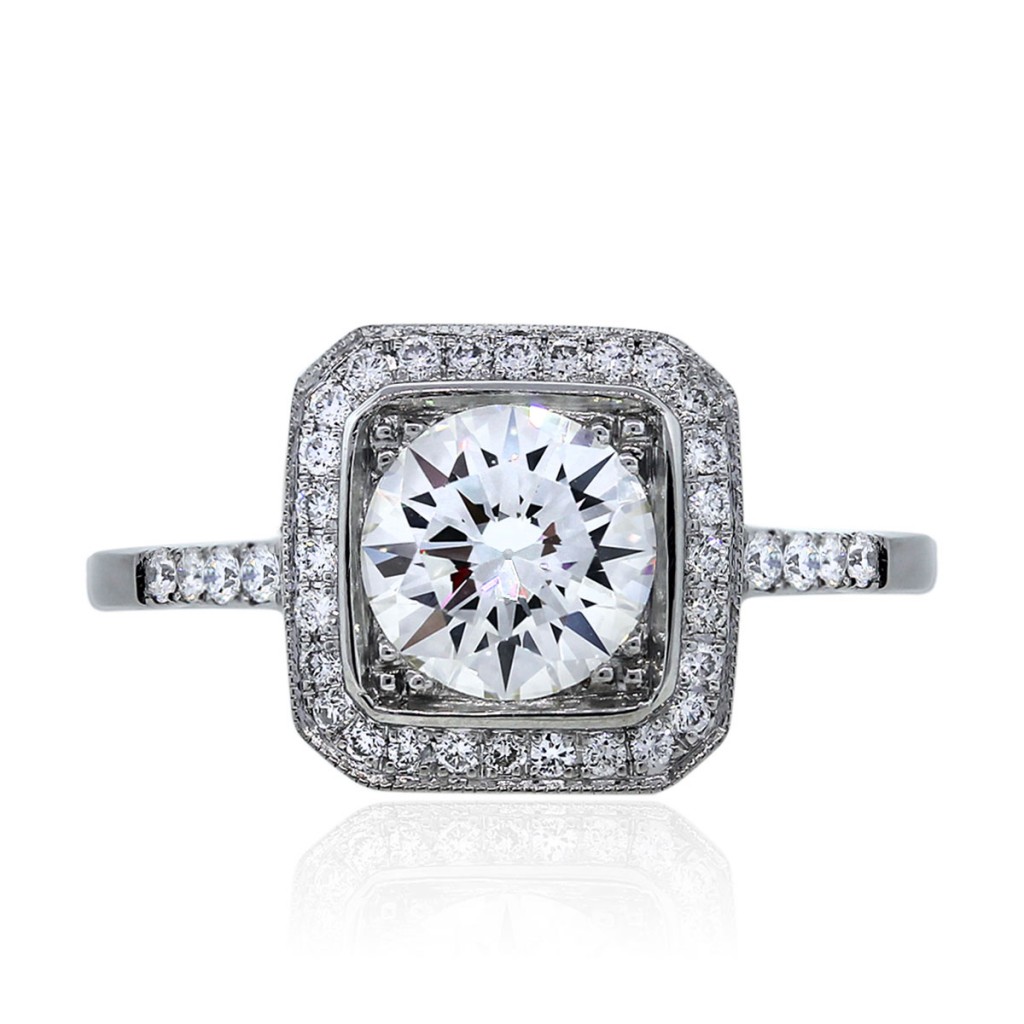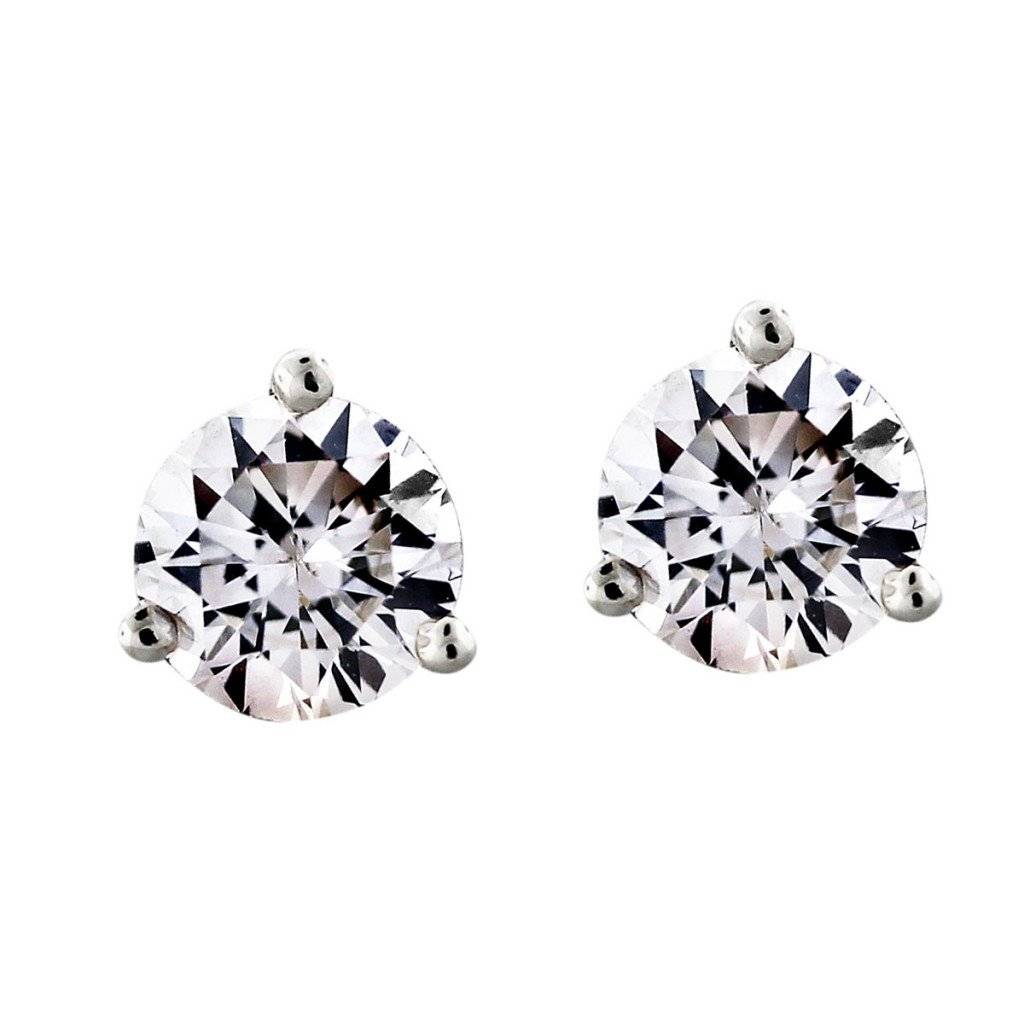History of Engagement Rings

When you think of engagements, you probably instantly think of cheesy commercial with a totally in love couple and of course, the diamond ring. You may think that this is the way it has always been, but that is simply not the case. Actually, the most common form of betrothal token was a thimble, which was used for sewing. Real Romantic. Women like nothing more than the opportunity to sew. Right. What’s worse is that the wife was supposed to cut the top of this thing off and use it as a ring.
It wasn’t better in ancient times, either. Ancient Roman husbands would give iron rings to their future wives as signs of strength, whether it was the strength of the bond of marriage, or the authority over the woman, is unknown. Hmph. Aren’t you glad the times have changed?
Ancient Traditions
Engagements rings without diamonds, or “basic” rings, as one might call them, have been around for thousands of years. Virtually every ancient culture gave rings for betrothal, from the Egyptians to the Romans (as mentioned above). With the dawn of the Black Plague and the Dark Ages, love for engagements rings seem to wane, as more people were probably more concerned with finding food and not dying a miserably painful death. Engagement rings would not be revived gain until the 13th century, two hundred years before an engagement ring would don a diamond.
Archduke Maximilian Ups the Ante
The first recorded engagement ring to include a diamond was given by Archduke Maximilian of Austria, of the Habsburg Dynasty, who gave the ring to his fiancé, (as one might expect) Mary of Burgundy, in 1477. This was a BIG deal since diamonds were even more expensive and rare at that point in history than they are today. So this was quite the hefty investment, even for an archduke. Hey, it is alright for a man to overspend on the woman he plans to spend the rest of his life with, right?
Unless you were the Archduke Maxilmian of Austria. He ended up building up such a large amount of debt due to his expensive tastes and many expensive wars to conquer various territories, that when he ended his reign as Holy Roman Emperor he was buried in a mountain of debt. To give you an idea of how much cash that was, it was equal to a decade of income from all of his territories combined. And this was the largest empire in the world. Kind of sounds like the political leaders of today, eh?
Diamonds get Discovered in Africa
Diamonds did not become (more) affordable until multiple deposits were discovered in Africa. In 1866 Erasmus Jacob, a boy playing on the banks of the Orange River (who knows if he was supervised) in South Africa. The “pebble” changed several hands until someone realized it was a diamond. Three years later another diamond was again in the same area. This diamond would sell in London for 25,000 pounds and spurred an increased interest for diamond mining in Africa.
The De Beers Make Their Mark
In 1871 a colossal 83.5 carat diamond was found on the property of two brothers. Maybe you heard o of the name De Beers? It was found by a cook working for a prospecting party. It can be assumed that this cook was in perhaps in the long line of work. Nonetheless, the Kimberly diamond deposits had been officially found.
The surface deposits were quickly sucked up by mining operations. However, that turned out just to be the candy coatings on a multi billion dollar sundae. The miners found a volcanic plug, a massive volcanic rock that propelled itself near the surface due to an ancient eruption millions of years in the past. This rock contained the largest reserves of diamonds that has ever been found on earth. Between 1871-1914 over two tons of diamonds were extracted from it. So many diamonds were extracted that for the first time ever, diamonds with affordable to more than just royalty. Dozens of mines were consolidated to form the De Beers Consolidated Mine company most people know of today.
Making Diamonds Shine (figuratively)

14K White Gold 0.82ct Diamond Stud Earrings
So now that the Debeers had an amazing product, it needed a target market. The company launched massive, like Everest mountain massive, campaigns to convince families in Europe that this alluring gem, once only available to the aristocracy, could now be owned by them. The idea caught on instantly and within weeks hopeful would-be husbands were lining up to purchase a dazzling diamond for the beloved.
When Europe’s economy went stagnant by WWI, De Beers turned its attention to the giant American middle class. Starting in the 1930’s, De Beers put more resources into its American marketing campaign. Even in spite of the Great Depression, America became the worlds’ most affluent society and started to buy diamonds in droves. Some scholars even think that many people bought diamonds not just for popularity, but because the great depression created a great amount of distrust in paper money, which led people to invest in real assets like gold and diamonds. People started buying diamond engagement rings and haven’t been able to stop since.
And for the record, in order to put a “proper price tag” on its products, De Beers actually told young men how much they should spend on diamond rings. First, it was “a week’s worth of pay,” but as popularity and demand for diamonds rose, De Beers changed it to “a month’s salary.” This old marketing campaign stuck around, and many young men today still obey the maxim.
Of course, we beg to differ. We eschew any type of budget “rule” for engagement rings (unless it’s April Fool’s.) Our best advice? Buy the best engagement ring you can afford – we’ll be happy to tell you how.


